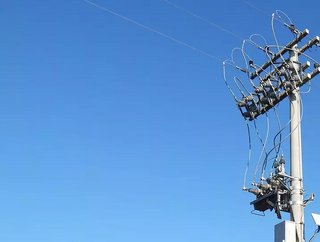The role of satellite in smart grid development

The utilities sector has become a pioneer of digital transformation in recent years, driven by a need to monitor, manage, automate and ultimately improve the quality and reliability of energy being supplied to consumers. Satellite connectivity is playing an increasingly important role in this move, at different stages of the distribution process.
Ever more advanced technologies are being deployed across utilities networks in the march to build ‘smarter’ grids. Innovations in the use of centralised automated reclosers, advanced metering infrastructure (AMI) and the increasing automation of substations, in particular, continue to drive the sector forwards.
The traditional mix of connectivity technologies that have underpinned the expansion of smart grid applications over the last two decades – largely based on a combination of radio and cellular networks – requires updating. Vast areas of networks still have coverage dark spots, where terrestrial connectivity fails to provide the communications backbone needed to build efficient, reliable and secure smart grids. Additionally the need to have a failsafe in the case of a temporary outages with the main connectivity method means satellite can provide a highly reliable backup.
Satellite as a critical tool
In the past, satellite-enabled solutions that provide ‘always on’ connectivity for utilities were often deemed cost-prohibitive or overly reliant on bulky hardware, but much has changed in recent years. The latest satellite technologies ensure ubiquitous connectivity in a highly cost-effective way, in addition to working as a highly reliable backup comms system when terrestrial connectivity networks fail.
Utilities companies need to meet fluctuations in consumer demand, to dynamically respond to surges, keeping downtime to an absolute minimum and providing a high level of service that improves people’s lives. These challenges are compounded by the shift towards a distributed-generation, low carbon economy that is transforming how power is both being produced and consumed by end users worldwide.
While the traditional electrical grid was a ‘one-way’ system, ‘smarter’ two-way grids give distributors and suppliers heads-up feedback on parameters such as system outages and local variations in electrical use. This provides grid managers the data needed to optimise the performance of the network, ensuring they can accommodate peak loads and anticipate any disturbances in supply.
Changing the perception of satellite
Of those three core applications referenced above, it is arguable that centralised automated reclosers are the most important smart grid application, as they allow utility companies to sense and interrupt currents in the event of a fault, giving them the tools to automatically reconfigure the network to isolate faults and restore supply.
All of these technologies – enabled by supervisory and control (SCADA) systems - are making field data more accessible and reliable than ever before, helping grid managers to make smarter, more informed decisions: enhancing visibility over metering and grid networks, ensuring fewer and shorter outages, reducing peak consumption by shifting demand loads, optimising electricity generation and distribution and keeping maintenance costs to a minimum.
As today’s utility companies rely on these technologies to make the distribution smart grid more flexible, stable, resilient and secure, the same qualities must be true of their communications networks. In this context, the cost and reliability limitations of traditional radio and cellular-based technologies in enabling remote SCADA systems are becoming increasingly clear. Simply put, an unreliable communications backbone (particularly in remote and rural areas) significantly limits a grid managers ability to pinpoint malfunctions and dynamically respond to power outages.
A lack of available and reliable terrestrial communication is a huge barrier to enhancing the capabilities of your network and making the most of smart grid applications and solutions. Whether it is smart meters or digital sensors and switches, such infrastructure advancements cannot be optimised (or are simply not possible) without reliable connectivity.
This is where the latest cost-effective satellite technologies and robust, reliable terminals are ideal for backhauling data from smart grid applications installed anywhere in the power grid, providing grid managers with an easy to integrate, real-time, IP-based connectivity service and giving them greater command and control across their entire network.
At this point, it’s important that utilities companies understand the differences and limitations of different satellite services. VSAT satellite systems, for example, work with bulky terminals that rely on a high power draw and can often cease working in the event of a power cut. Plus, they often lose connection if adverse weather conditions such as cloud or wind interfere with the terminals.
In contrast, Inmarsat’s BGAN M2M service operates on Inmarsat’s L-band network, which was optimised for government and emergency applications and ranks amongst the most reliable forms of satellite connectivity. Moreover, the BGAN M2M service features robust and compact terminals that are smaller than a typical laptop, are easy to install and can withstand the harshest environmental conditions, with a lifespan of up to ten years or more and low monthly data usage costs.
This is why Inmarsat’s BGAN M2M service is already used on over ten thousand reclosers across the world and has been trusted as the industry standard, providing utilities companies the necessary cost-effective, flexible, stable and secure communications backbone to underpin the latest smart grid innovations and developments of both today and tomorrow.






